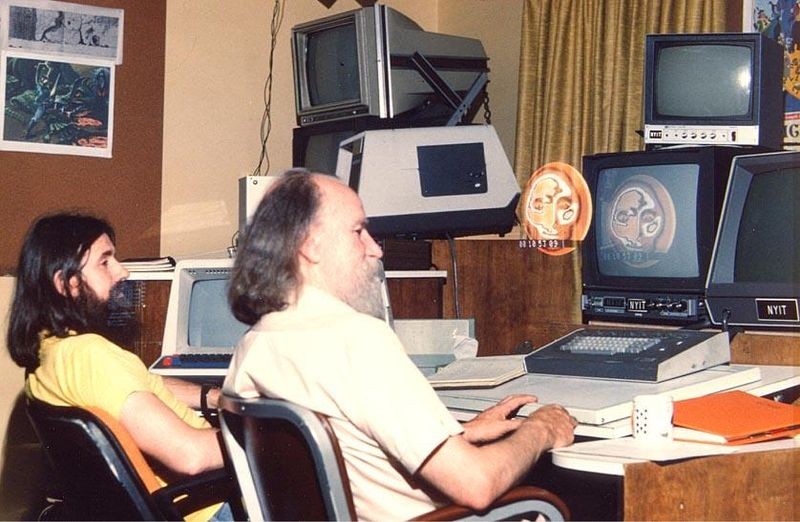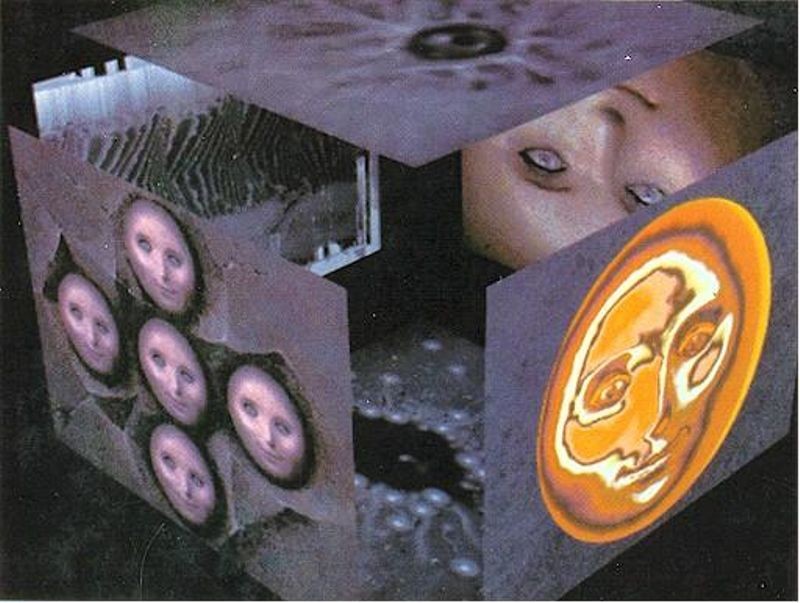
I can name the singular moment that began my interest in computer graphics. It was a video we watched on a field trip to the Lawrence Hall of Science. The video was the most amazing thing a six year old had ever seen. It was a series of seemingly unrelated images that moved, but they weren’t real images. This semi-abstract collection of pieces captured my interest and as time went on, I discovered that it had opened up a new world to me. The video was called Sunstone, which turned out to be one of the most significant early computer animated films ever made. Here is the story behind Sunstone. Alvy Ray Smith is one of the seminal figures in the history of computer graphics and has worked at some of the most significant early innovators computer graphics, notably Lucasfilms computer division and Xerox PARC. It was while he was at PARC that he worked with researcher Richard Shoup on the SuperPaint project. This revolutionary graphics system introduced a number of innovations that would become ubiquitous in computer graphics, especially the concept of the frame buffer. SuperPaint was used to create graphics for local San Francisco Bay Area PBS Station KQED television and for imagery used as a part of NASA’s Pioneer Venus program. Smith, Shoup, and Thomas Porter were awarded an Academy Award for their paint systems in 1998. Smith joined the New York Institute of Technology’s Computer Graphics Laboratory. Established in 1974, the Laboratory was on the cutting edge of computer graphics research, with innovations including computer-controlled video editing and the PAINT system developed by Alvy Ray. Many of the most significant figures in computer graphics history passed through NYIT, including Netscape co-founder Jim Clark, Pixar’s Ed Catmull, and graphics pioneer Jim Blinn. Also at NYIT at the time was a former University of Utah student named Lance Williams. Williams would work on various projects, including an attempt to create the first feature-length animated film, The Works. Garland Stern, another former Utah student, was working on scan and paint programs at NYIT. The creation of Sunstone began in 1979. While Smith was the technological master of Sunstone, Williams and Stern made significant contributions. Williams created a floating image of a tongue, Stern did a live video capture. The other portion of the team was a figure who loomed large over several artistic fields: Ed Emshwiller.

Cover of Astounding Science Fiction, October 1957, by Ed Emshwiller
Emshwiller, known in some circles as “Emsh,” was trained as a painter and illustrator at the University of Michigan and the École des Beaux Arts in Paris. He painted in the Abstract Expressionist mode during the 1950s, but at the same time provided covers to many science fiction magazines of the day, most notably Galaxy and The Magazine of Science Fiction & Fantasy. His cover for the October 1957 Astounding Science Fiction is noted as one of the earliest realistic treatments of computers in science fiction art (even if the tape drives did have three reels!) He won five Hugo awards for Best Artist between 1953 and 1964. In the 1960s, a grant from the Ford Foundation allowed him to begin to explore his interest in film, eventually leading to him becoming an important part of the New American Cinema movement. His works often danced on the line between avant garde experimentation and documentary. His films like Relativity and George Dumpson’s Place were highly lauded for their innovative style and composition. He would go on to become one of the first filmmakers to take on video for the creation of documentary and experimental film. Emshwiller had a grant from the Guggenheim Foundation to make a new movie. He approached Smith and the NYIT team about doing a computer animated movie. In fact, his proposal would have led to the first feature-length computer animated film. Smith said:
Smith and Emshwiller worked together, with Emsh serving as the lead artist. Smith describes the process as this:

Alvy Ray Smith (left) And Ed Emshwiller at NYIT, 1979. Note the floating Sunstone face, an accidental double exposure caused by someone kicking the camera.
In 1979, Sunstone seemed far ahead of the computer graphics curve. While there had been limited computer-generated segments used in films such as Westworld and Star Wars, and artists such as Ken Knowlton and Lillian Schwartz had been creating art films since the 1960s, none had gone to the extremes that Emsh and the NYIT team did with Sunstone. The opening of the film features a face pushing through stone, failing at first, then finally emerging. This image is very “Emshian”: the emergence of a form that first fails to come to fruition and later appears. Once it comes through fully, it is a smiling human face. This face throbs and changes in color, texture, and tone. At one point it ages, forming a series of cracks throughout. While this would seem primitive today, it was far ahead of what people thought was possible at the time. The images are color, three dimensional, and while they may seem plastic, there is a sculptural quality to them. I can point to the single moment in the film that blew the mind of a young Chris Garcia, and the rest of my Westwood Elementary class. The scene of the face pulls back and is replaced with an exploded cube of several different images. The six faces of the cube separate, but obviously influence one another against the vacuum of space–it was a more dazzling image than I had ever seen. This was the calling card for the future of graphics, and even though I was so young I could have easily believed anything was possible, the image seemed to be the absolute end of all that was possible in the world.

The Exploded Cube, a still from Sunstone.
Eventually, the rotating exploded cube settles onto what seems to be an abstract trail. We quickly discover that it is in fact a video trail left by a young man, in this case Peter “Stoney” Emshwiller–the artist’s son– walking across the screen. This effect is an early example of computer-manipulated video. The image of the man crossing the screen leaves behind traces that remain on-screen, and slowly crawl upwards towards the top of the shot. This sort of image was perhaps influenced by the early video experiments of artists and producers such as OffOn by Scott Bartlett. It is a beautiful way for the video to slowly fade away. Sunstone would become one of the most acclaimed of all computer-generated shorts. It played at the 1981 Mill Valley Film Festival, on WNET’s Film/Video Review, at the 1979 SIGGRAPH conference, in many gallery showings, and later in retrospectives of Emshwiller’s works. It is included in the collection of the Museum of Modern Art, and the image of the exploded cube is the cover of one of the seminal works in the field of computer graphics, Foley and Van Dam’s Fundamentals of Computer Graphics. Lance Williams left NYIT, later joined Apple in their Advanced Technology Group, before eventually serving as Chief Scientist at Walt Disney Feature Animation Studios. Garland Stern would later develop the BBOP 3-D Animation software. In 1979, Alvy Ray Smith co-founded Pixar with Ed Catmull, funded by Steve Jobs, and has twice been recognized by the Academy of Motion Picture Arts and Sciences for his technical contributions filmmaking. In 1994, he was named Microsoft’s first Graphics Fellow. After completing Sunstone, Ed Emshwiller went on to the California Institute of the Arts (CalArts) and founded the CalArts Computer Animation Lab. He would later serve as Dean of CalArts’ School of Film and Video and as Provost. IN 1987, Emshwiller and composer Morton Subotnick developed a video opera called Hunger, later presented at the Ars Electronica festival in 1989. It would be the last piece Emshwiller would complete before his passing in 1990 at the age of 65. His influence included not only Alvy Ray Smith (who considered Emsh his mentor), but generations of science fiction illustrators, artists, and filmmakers. Of their work on Sunstone, Smith noted “Like I tell people, Sunstone is to me the most important work of my life, and more meaningful even than the Pixar movies.” Sunstone can be seen, along with more than 30 other short films in Revolution: The First 2000 Years of Computing at the Computer History Museum.
Watch Sunstone